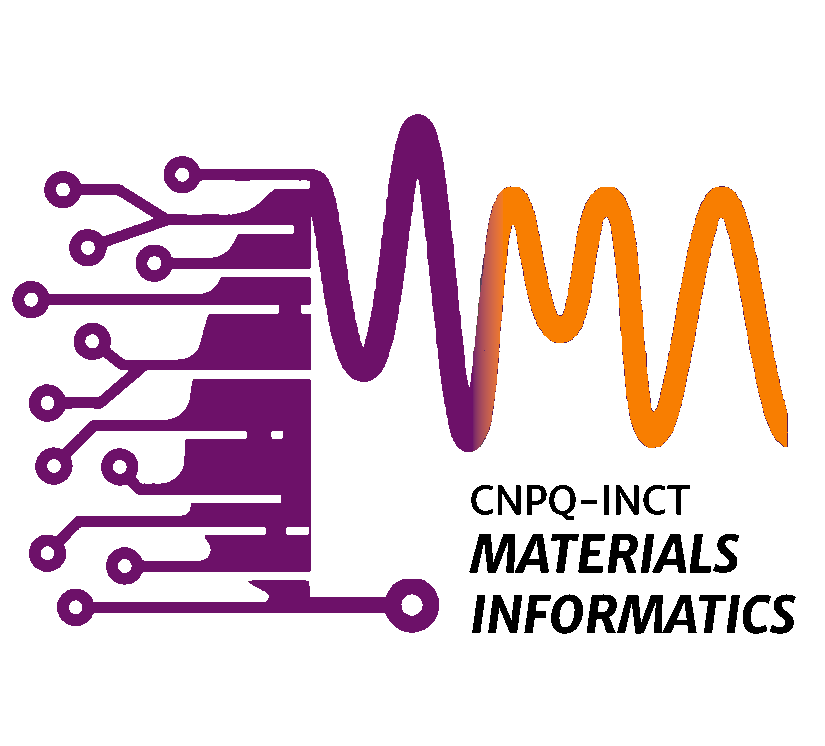Portugal, Guilherme Ribeiro; Arantes, Jeverson Teodoro Polar NaTaO3/LaAlO3 (001) superlattices: A comparison of PBEsol and PBEsol+U first-principles calculations Journal Article Em: Computational Materials Science, vol. 233, pp. 112747, 2023, ISSN: 0927-0256. Resumo | Links | BibTeX | Tags: 2DEG, DFT+, Interfaces, Perovskite, Polarity, Superlattices Portugal, Guilherme Ribeiro; Ronchi, Rodrigo Mantovani; Santos, Sydney Ferreira; Arantes, Jeverson Teodoro Composition-dependent photocatalytic activity and high-mobility carrier gas in NaTaO3/BaBiO3 heterojunctions Journal Article Em: Surfaces and Interfaces, vol. 36, pp. 102486, 2023, ISSN: 2468-0230. Resumo | Links | BibTeX | Tags: BaBiO, DFT, Heterojunction, Interface, NaTaO, Perovskite@article{PORTUGAL2024112747,
title = {Polar NaTaO3/LaAlO3 (001) superlattices: A comparison of PBEsol and PBEsol+U first-principles calculations},
author = {Guilherme Ribeiro Portugal and Jeverson Teodoro Arantes},
url = {https://www.sciencedirect.com/science/article/pii/S0927025623007413},
doi = {https://doi.org/10.1016/j.commatsci.2023.112747},
issn = {0927-0256},
year = {2023},
date = {2023-12-21},
urldate = {2024-01-01},
journal = {Computational Materials Science},
volume = {233},
pages = {112747},
abstract = {The increasing experimental and theoretical interest in two-dimensional charge carrier gases formed at the interfaces of heterostructured perovskite oxide systems has led to a demand for a deeper understanding regarding the influence of exchange–correlation functionals and associated corrections on the systems’ properties. Herein, we investigate the impact of implementing additive Hubbard corrections compared to standard DFT routines using the PBEsol functional in polar NaTaO3/LaAlO3 (001) superlattices. Structural analysis reveals that the qualitative assessment remains consistent regardless of the approach, with slight variations observed for the NaTaO3 phase due to more pronounced polar distortions. Electronically, standard PBEsol fails to accurately describe the electronic structure of the superlattice below the system’s critical thickness, whereas the inclusion of on-site Coulomb interactions through PBEsol+U routines provides the correct semiconductor character of the superlattice, emphasizing the role of strong correlation effects on d and f electrons at the material’s interface. Additionally, our investigation reveals the spatial charge separation in the semiconductor heterostructure, with potential implications for photocatalytic devices. This work not only contributes to demonstrate the importance of the chosen methodology when studying such systems but also sheds light on important electronic and structural properties of NaTaO3/LaAlO3 (001) superlattices, enabling new avenues for future applications.},
keywords = {2DEG, DFT+, Interfaces, Perovskite, Polarity, Superlattices},
pubstate = {published},
tppubtype = {article}
}
@article{PORTUGAL2023102486,
title = {Composition-dependent photocatalytic activity and high-mobility carrier gas in NaTaO3/BaBiO3 heterojunctions},
author = {Guilherme Ribeiro Portugal and Rodrigo Mantovani Ronchi and Sydney Ferreira Santos and Jeverson Teodoro Arantes},
url = {https://www.sciencedirect.com/science/article/pii/S2468023022007453},
doi = {https://doi.org/10.1016/j.surfin.2022.102486},
issn = {2468-0230},
year = {2023},
date = {2023-01-01},
journal = {Surfaces and Interfaces},
volume = {36},
pages = {102486},
abstract = {Perovskite oxide heterostructures have been extensively investigated for their excellent nanoelectronics and photocatalytic properties. Herein, the general features of monoclinic (001) NaTaO3/BaBiO3 heterojunctions are theoretically investigated, exploring how the interface creation affects their physicochemical properties. Density functional theory results reveal that a superlattice with 24 wt.% of BaBiO3 displays a typically desired electronic structure for photocatalytic reactions, with an intermediate band gap and highly dispersive energy levels. Hybrid functional calculations provide a band gap of 1.85 eV, with optical absorption peaks inside the visible light spectrum and band-edge potentials better aligned with water splitting levels when compared with the pristine NaTaO3 phase. Upon increasing the number of BaBiO3 layers a semiconductor-to-metal transition is observed and described based on electrostatic and polarization arguments, leading to the formation of a high-mobility two-dimensional electron gas (2DEG) at the interface. The presented results highlight the importance of such nanojunctions not only for photocatalytic but also for nanoelectronics applications.},
keywords = {BaBiO, DFT, Heterojunction, Interface, NaTaO, Perovskite},
pubstate = {published},
tppubtype = {article}
}

